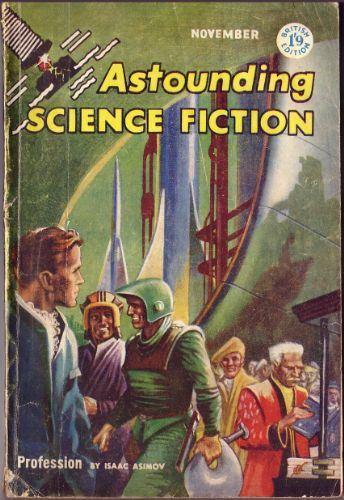Science fiction had entered its prime. After one-hundred years of history, it was now a bona fide genre with its own name, authors, and magazines. The 1930s were a time of development in the genre in all mediums. You may notice the format of these blog posts changing as we move forwards. That is because there is simply so much science fiction material to cover that I will be spending more time discussing it than I will on the history and technology of a decade.
Summary:

At the end of the 1920s, the western world experienced a devastating financial depression known as the Great Depression. In the United States, this was compounded by a massive drought known as the Dust Bowl in the Midwest. The Gilded age and the Jazz Age had given way to a struggle for survival. The time people didn’t spend on taking care of themselves, they spent trying to distract themselves from the troubles of daily life. The BBC was the first company to broadcast high definition television regularly. Their broadcasts began in 1936.
However, financial troubles weren’t the only dark cloud looming over the future. Foreshadowings of a great war began in the early 1930s, as Adolf Hitler began his rise to power in Germany, and his march across the continent of Europe. At the end of the decade, a discovery was made that would forever alter the nature of war. In 1939, nuclear fission was discovered- a process capable of producing massive amounts of power, and massive amounts of destruction.
Science Fiction:
Literature-

Several of the most acclaimed classic science fiction novels were published in the 1930s, including Olaf Stapledon’s Last and First Men. This massive tome of future history described human civilization from 1930 and onward for two billion years.Stapledon utilized Hegel’s theory of the dialectic, which describes history as a series of conflicts between the thesis (the way things are), and the antithesis (the way things aren’t), resulting in a new thesis. In his speculation, Stapledon anticipated genetic engineering, and pondered the concept of the supermind.

In 1932, Aldous Huxley described a dark and disturbing psychological dystopia in one of the most highly acclaimed science fiction novels ever written. Brave New World often finds a place on lists of best English-language literature.

Noted theologian and author C.S. Lewis delved into science fiction in 1938 with Out of the Silent Planet, the first novel in his Space Trilogy. These three novels are considered classics both of science fiction and of Christian literature. Out of the Silent Planet is the tale of a quiet philologist named Ransom who finds himself kidnapped and taken to the planet Mars. Lewis explores themes of human nature and corruption, as well as humanity’s place in the natural and metaphysical world.
Magazines and Comics-

Astounding Stories of Science Fiction (later known as Astounding Science Fiction), began publication in 1930. At the end of the decade, in 1938 and 1939, Astounding Science Fiction and Amazing Science Fiction featured short fiction by up-and-coming science fiction author Isaac Asimov.

The superhero subgenre of science fiction gained notoriety in 1938 with the publication of Action Comics #1, the first to feature extraterrestrial friend to humanity, Superman. He was joined by his gritty, detective counterpart in 1939, when Batman made his debut in Detective Comics #37.
Film-
.jpg)
Mary Shelley’s groundbreaking classic was once again put to the silver screen in 1931, when James Whale directed the most iconic Frankenstein film ever. The design for the monster, played by Boris Karloff, has become the standard image of Frankenstein’s monster in popular culture. Two other classic novels were notably adapted in the 1930s- Dr. Jekyll and Mr. Hyde in 1932, and The Invisible Man in 1933 (also directed by James Whale).

In 1936, William Cameron Menzies directed a film written by H.G. Wells called Things to Come. The movie was a fictional discussion on the great and terrible possibilities of the future.
_04.jpg)
An iconic space hero made his film debut in 1936, when Flash Gordon serials first began to be aired in theatres. Flash was originally a comic strip competitor of Buck Rogers in 1934, and took on a whole new dimension when portrayed on the big screen by Buster Crabbe.
Radio-

Perhaps one of the most infamous incidents in radio history occurred on Halloween night of 1938, when Orson Welles startled some uninformed members of the listening audience with his rendition of The War of the Worlds. Welles’ adaptation of Wells’ classic relied heavily on realistic news broadcasts- causing those who tuned in late to wonder whether Martians really were invading the planet.
Keep on glowing in the dark,
Elora
No comments:
Post a Comment